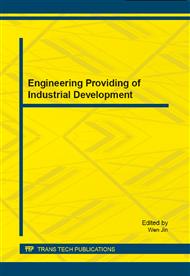[1]
Kipnis, A., and Shamir, A.: Cryptanalysis of the HFE public key cryptosystem by Relinearization'. Proceedings of the Advances in Crypto, 99, Santa Barbara, USA, 1999, LNCS, 1666, pp.19-30.
DOI: 10.1007/3-540-48405-1_2
Google Scholar
[2]
Courtois, N., and Meier, W.: Algebraic attacks on stream ciphers with linear feedback,. Advances in Cryptology-EUROCRYPT 2003, Warsaw, Poland, 2003, LNCS, 2656, pp.345-359.
DOI: 10.1007/3-540-39200-9_21
Google Scholar
[3]
Meier, W., Pasalic, E., and Carle, C.: Algebraic attacks and decomposition of Boolean functions,. Advances in Cryptology-EUROCRYPT 2004, Interlaken, LNCS, 3027, pp.474-491.
DOI: 10.1007/978-3-540-24676-3_28
Google Scholar
[4]
Yang, Y.: On the H-Boolean functions, Journal of Beijing University of Posts and Telecommunications, 1988, 11, (3), pp.1-9. (In Chinese).
Google Scholar
[5]
Wen, Q., Niu, X., and Yang, Y.: The Boolean Functions in Modern cryptology, (Science Press of China, 2000). (In Chinese).
Google Scholar
[6]
Dalai, D. K., Gupta, K. C., and Maitra, S.: Cryptographically significant Boolean functions: Construction and analysis in terms of algebraic immunity,. FSE 2005, LNCS, 3557, pp.98-111.
DOI: 10.1007/11502760_7
Google Scholar
[7]
Li, N., Qi, W.: Boolean functions of an odd number of variables with maximum algebraic immunity, Science in China Series F: Information Sciences, 2007, 50, (3), pp.307-317.
DOI: 10.1007/s11432-007-0027-4
Google Scholar
[8]
Carlet, C. and Feng, K.: An infinite class of balanced functions with optimal algebraic immunity, good immunity to fast algebraic attacks and good nonlinearity, Advances in Cryptology-ASIACRYPT 2008, Melbourne, Australia, 2008, LNCS, 5350, pp.425-440.
DOI: 10.1007/978-3-540-89255-7_26
Google Scholar
[9]
Zhang, W., Wu, C., Yu, J.: On the Annihilators of Cryptographic Boolean Functions, Acta Electronica Sinica, 2006, 34, (1), pp.51-54. (In Chinese).
Google Scholar
[10]
Peng, J., Wu, Q., Kan, H.: On symmetric boolean functions with high algebraic immunity on even number of variables, IEEE Trans. Inf. Theory, 2011, 57, (10), pp.7205-7220.
DOI: 10.1109/tit.2011.2132113
Google Scholar
[11]
Xie, J., Wang, T.: Finding the Annihilators of a Boolean Function, Acta Electronica Sinica, 2010, 38, (11), pp.2686-2690. (In Chinese).
Google Scholar
[12]
Reed, I. S.: A class of multiple-error-correcting codes and the decoding scheme, IRE Transactions on Information Theory, 1954, 4, (4), pp.38-49.
DOI: 10.1109/tit.1954.1057465
Google Scholar
[13]
Akers, S. B.: On a theory of Boolean functions, Journal of the Society for Industrial and Applied Mathematics, 1959, 7, (4), pp.487-498.
Google Scholar
[14]
Ding, Y., Wang, Z., Ye, J.: Initial-value problem of the Boolean function's primary function and its application in cryptographic system, Kybernetes, 2010, 39, (6), pp.900-906.
DOI: 10.1108/03684921011046663
Google Scholar
[15]
Li, W., Wang, Z., Huang, J.: The e-derivative of boolean functions and its application in the fault detection and cryptographic system, Kybernetes, 2011, 40, (5-6), pp.905-911.
DOI: 10.1108/03684921111142458
Google Scholar
[16]
Huang, J., Wang, Z.: The relationship between correlation immune and weight of H Boolean functions, Journal on Communications, 2012, 33, (2), pp.110-118. (In Chinese).
Google Scholar
[17]
Huang, J., Wang, Z., Hu, J.: On relationship of some cryptographic properties for weight symmetric H Boolean functions, Advanced Materials Research, 2013, 774-776, pp.1762-1765.
DOI: 10.4028/www.scientific.net/amr.774-776.1762
Google Scholar


